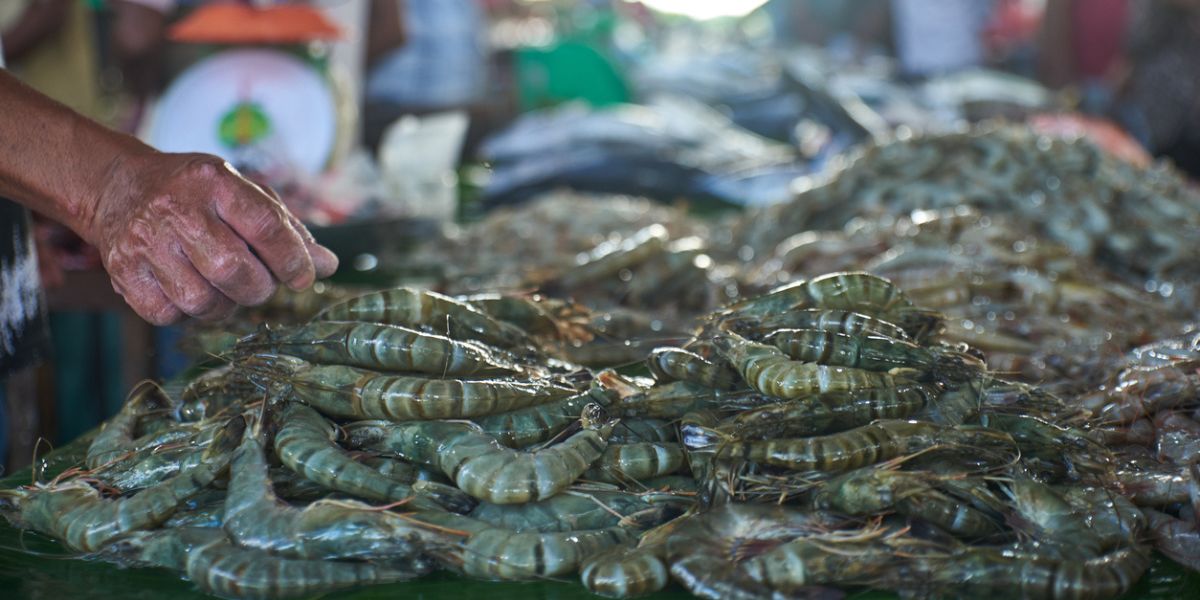Under the revised norms, only prawns sourced from disease-free aquaculture zones, frozen and deveined, will be allowed entry into Australia, reflecting the latter’s stringent biosecurity protocols.
Published Oct 23, 2025 | 8:00 AM ⚊ Updated Oct 23, 2025 | 8:00 AM

Pile of fresh raw prawns. (iStock)
Synopsis: Australia has lifted its eight-year ban on unpeeled Indian prawn imports, paving the way for Andhra Pradesh’s aquaculture sector to bounce back. Andhra Pradesh’s Information Technology and Human Resource Development Minister Nara Lokesh’s ongoing visit to Australia is said to have played a key role in lifting the ban.
In a major diplomatic and economic breakthrough, Australia has lifted its eight-year ban on unpeeled Indian prawn imports, paving the way for Andhra Pradesh’s aquaculture sector to bounce back.
The development is being hailed as a milestone in Andhra Pradesh’s Information Technology and Human Resource Development Minister Nara Lokesh’s journey in public life, whose ongoing visit to Australia is seen as playing a key role in lifting the ban.
Australia had barred Indian prawn imports in January 2017 after detecting traces of white spot syndrome virus in several consignments. Now, with the ban lifted, Andhra’s shrimp exporters — who account for nearly 60–80 percent of India’s total seafood exports — are back in the game.
Under the revised norms, only prawns sourced from disease-free aquaculture zones, frozen and deveined, will be allowed entry into Australia, reflecting the latter’s stringent biosecurity protocols. For Andhra’s aquaculture hubs in Nellore, Bapatla and West Godavari, this decision could not have come at a better time.
Announcing the development on 21 October, Lokesh said the reopening of the Australian market would serve as a lifeline for coastal farmers hit hard by the punitive US tariffs, which currently stand at up to 59.72 percent. The steep duties had priced Indian shrimp out of its largest market.
“This opportunity is a shot in the arm for Andhra’s farmers and exporters,” Lokesh said, adding that the government’s goal was to de-risk exports and expand into high-value markets.
During his ongoing seven-day Australian tour, Lokesh has been working the ropes to forge partnerships across the seafood trade, skills, and innovation. He held extensive talks with Seafood Industry Australia (SIA) CEO Veronica Papacosta and Engagement Manager Jasmin Kelleher, exploring ways to promote sustainable aquaculture and modernise India’s seafood value chain.
Lokesh praised Australia’s “Great Australian Seafood” campaign, calling it a masterclass in global branding. “Andhra Pradesh will learn from this success story to strengthen its own global footprint,” he said.
Lokesh’s visit seems to have extended beyond aquaculture diplomacy. He met New South Wales Premier Chris Minns, Parramatta Lord Mayor Martin Zaiter, and top executives at Western Sydney University to discuss collaboration in innovation, urban development, and agri-tech. Talks also touched upon partnerships with Acharya NG Ranga Agricultural University, particularly in sustainable farming and water management.
With the US market showing volatility, Lokesh is urging exporters to spread their nets wider and reduce overreliance on a single country. He credited both the Indian and Australian governments for facilitating the renewed trade flow and called the first approval for an Andhra consignment a “major step forward.”
“This is about rebuilding trust, ensuring sustainability, and creating a win-win model for both nations,” he said. For Andhra’s aquaculture sector, which has weathered storms ranging from trade bans to tariff shocks, Australia’s policy shift is being seen as a silver lining — a signal that the tide may finally be turning in its favour.
(Edited by Muhammed Fazil.)
